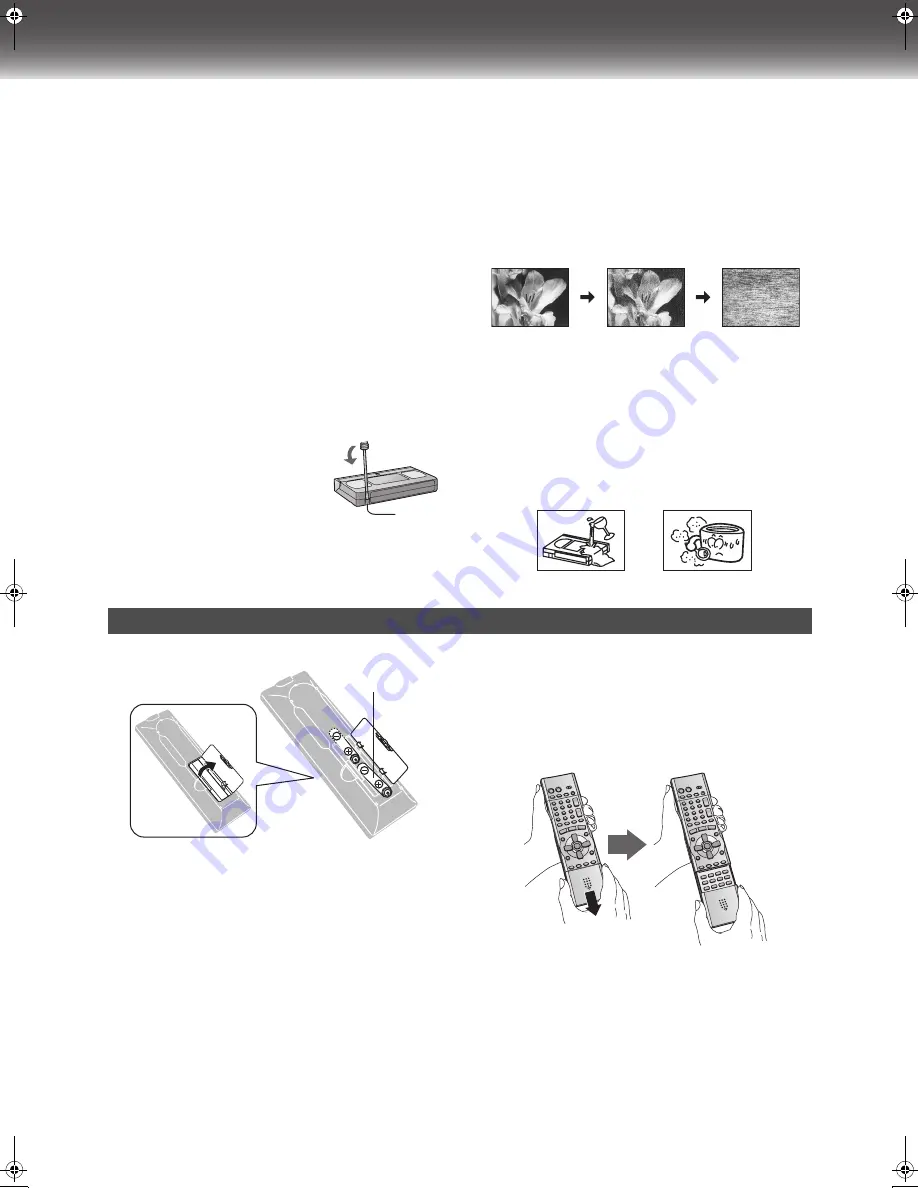
4
VHS Deck and Cassette Tape Information
ª
Surge Absorber
For further protection for this product, these models are equipped
with new surge absorbing circuits which prevents damage due to
power surges caused by lightning.
≥
This function may not be effective for surges by direct lightning.
ª
Crystal View Control
The crystal view control function ensures the optimum picture
quality so that you get the best picture automatically.
ª
Longrun Head System
This longrun head system enables approximately 8,000 hours of
recording/playback with high quality images. Newly developed
head cylinder with narrower head windows and tapered cylinder
design effectively protect heads from dust and prevents head
clogging. Plus, “Alumina” Head Cleaner enhances the cleaning
efficiency.
≥
Based on in-house tests with Panasonic video cassettes. Actual
head life may vary according to conditions of use, tape type,
temperature, humidity, etc.
ª
Tapes
≥
You can use tapes with the VHS and S-VHS marks, but this unit
is unable to make full use of the characteristics of S-VHS tapes.
≥
Break the tape’s tab to prevent
accidental erasure. Cover the hole with a
double layer of adhesive tape when you
want to use the tape for recording again.
ª
S-VHS Quasi Playback (SQPB)
It is possible to play back tapes recorded in the S-VHS system.
≥
Some picture noise may occur depending on the type of tape
used.
≥
It is not possible to fully obtain the high resolution that S-VHS is
capable of.
It is not possible to record in the S-VHS system with this unit.
ª
Dirt on the video heads
If the video heads get dirty, pictures will not be recorded or played
back clearly. (See the following conditions.)
If this happens, insert and eject a cassette 5
–
10 times
successively to remove the dirt from the video heads.
If the problem still persists after performing above, contact a
service personnel.
Heads mainly become dirty because of scratched or dirty tapes,
use of the unit under high temperature and humidity or under the
dust and other reasons.
Never use tapes on which liquids have been spilt or those that are
extremely damaged since these will cause not only the heads to
become dirty, but also the unit malfunction.
ª
Installing the batteries
Insert the batteries with the polarity (
+
and
-
) correctly aligned.
Notes:
The service life of the batteries is approximately 1 year.
However, it varies considerably depending on the frequency of
use.
≥
When the batteries are exhausted, remove them immediately
and dispose them correctly.
≥
Do not mix old battery with new battery.
≥
Do not mix different battery types, i.e. Alkaline and Manganese.
≥
Do not use rechargeable (Ni-Cd) batteries.
≥
Do not heat or short-circuit the batteries.
≥
When you do not use the remote control for a long time, take out
the batteries and store them in a cool, dry place.
ª
Use
Aim at the receiver window (
l
page 6), avoiding obstacles, at a
maximum range of 7 m directly in front of the unit.
≥
Keep the transmission window and the unit’s sensor free from
dust.
≥
Operation can be affected by strong light sources, such as direct
sunlight, and the glass doors on cabinets.
How to open the remote control
Hold both sides of the remote control’s cover to open it (You can
also open it by pressing on the centre of it and sliding it down).
Tab
Normal picture Small amount of dirt Large amount of dirt
The Remote Control
R6, AA, UM3
VP31GCGCS.book 4 ページ 2 0 0 3 年 7 月 3 0 日 水曜日 午後 8 時 2 8 分




























